Alive and kicking: Hands-on with Blood Bowl 3
Playing my first grisly match in Blood Bowl 3 and surviving to tell the tale.
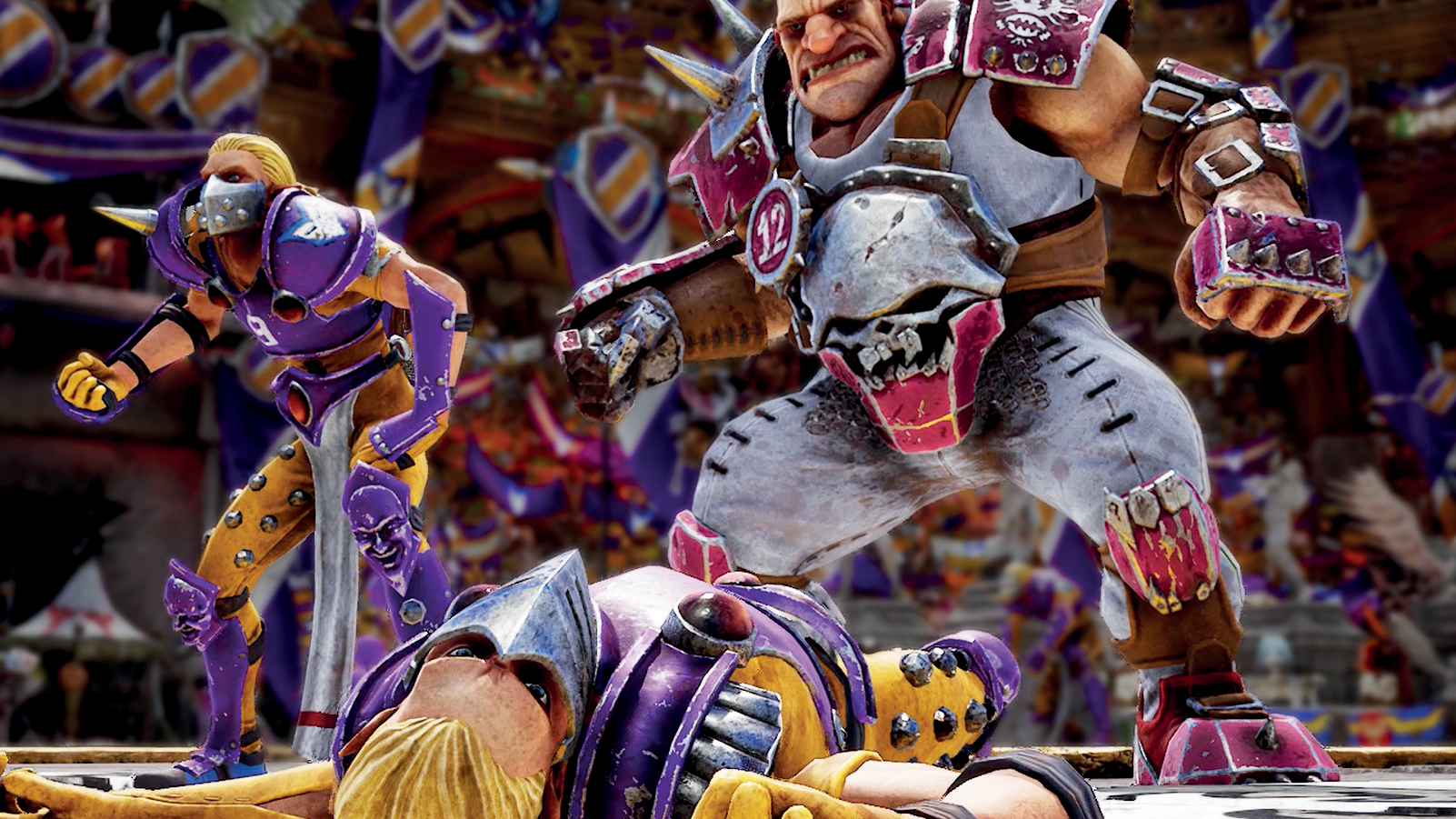
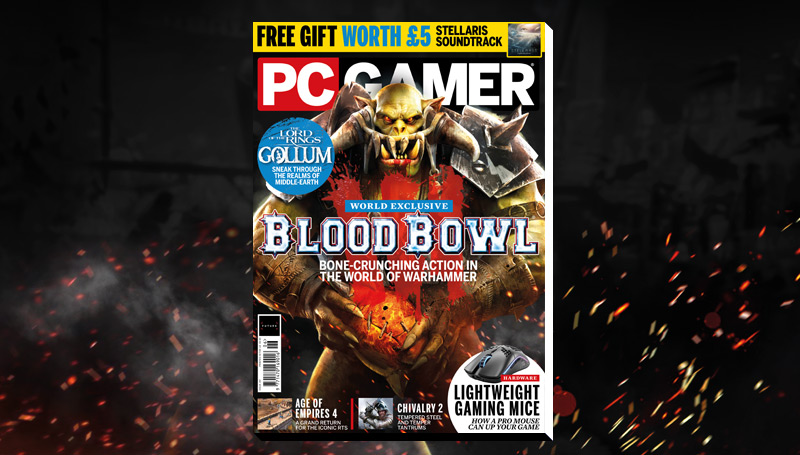
This article first appeared in PC Gamer magazine issue 357 in June 2021. Every month we run exclusive features exploring the world of PC gaming—from behind-the-scenes previews, to incredible community stories, to fascinating interviews, and more.
Games Workshop gave up on Blood Bowl for a long time. A fantasy football game for teams of 11 to 16, it was never going to move as many miniatures as wargames you have to buy entire armies for.
An official player committee was given the task of updating its living rulebook, which they did until 2009, when Cyanide released its first videogame version and essentially became the custodians of Blood Bowl. Cyanide organised tournaments online, created new teams like the heavily armoured Bretonnians and acrobatic bear-taming Kislev Circus, and helped keep Blood Bowl alive.
Today, Games Workshop is a different company, one with more time for hobbyist board games. The tabletop version of Blood Bowl was resurrected in 2016, and the rules overhauled in Second Season in 2020. Cyanide's videogames, once at the cutting edge, are now behind the ball, two editions out of date.
I get knocked down
But not for long. While the board game fans have nicknamed Blood Bowl 2020 was being designed, Cyanide was consulting on the rules in preparation for eventually digitising them in Blood Bowl 3. "Their knowledge and passion for Blood Bowl is phenomenal," says Owen Rees, head of videogame licensing at Games Workshop, "and indeed sometimes in the past their questions whilst coding the game have helped us refine our FAQs. Outside of Games Workshop they are probably the foremost experts on the game!"
Basile Bastian, lead game designer at Cyanide, confirms the close relationship. "I remember the first draft," he says, "there was a lot of differences with the previous set of rules, and we give feedback. 'This rule is a little bit strange because it says quite the opposite ten pages after'. They help us and we help them to improve also. So that was a nice exchange."
To demonstrate the changes in Blood Bowl 3, Bastian has set up an online match in the current build, several months ahead of its planned February 2022 release (it'll be out in Early Access in September 2021). We're both playing new teams, him the Imperial Nobility (humans in fancy armour, loosely replacing the Bretonnians), and me the Black Orcs (orcs with a little more skill than the regular kind, backed by goblins to do most of the fiddly ball-carrying).
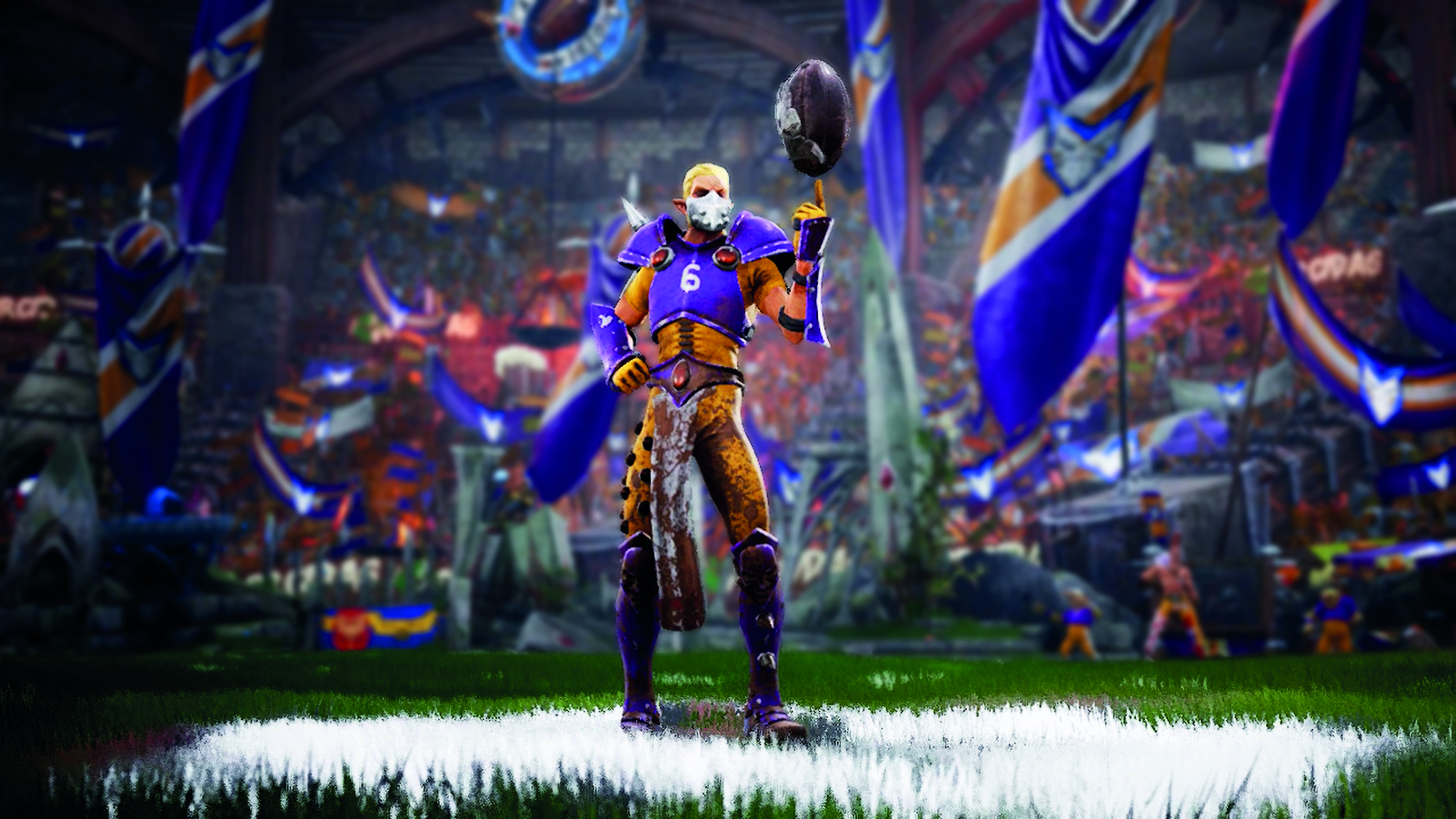
On the first turn I make a safe move, which is to say I hit someone smaller than me. I pick a humie player with no friends around, and execute a block on him—rolling two dice and choosing the most favourable since I'm stronger. Each comes up with the same result: Both Down. That would normally mean both players take a fall, except he's got the Block skill which prevents Both Down results from applying to him. I elect to reroll, and get the exact same result. My orc hits the deck, and it's an immediate turnover. A perfect first turn for my first game of Blood Bowl 3.
The biggest gaming news, reviews and hardware deals
Keep up to date with the most important stories and the best deals, as picked by the PC Gamer team.
So yes, Blood Bowl 3 is still the same Blood Bowl in spite of any changes: a game that encourages you to prioritise actions with the least chance of failing, yet will still sometimes slap you in the face because the dice are nobody's friend.
Personally, I love the randomness. It's five minutes into the match and already we're laughing, as we will be again when Bastian commits a foul on one of my players (making the PR guy quietly watching us chide him for not going easy on me), and again when I push one of his players into the rabid crowd to be pummelled into unconsciousness, and again when one of my goblins scores a touchdown against the odds.
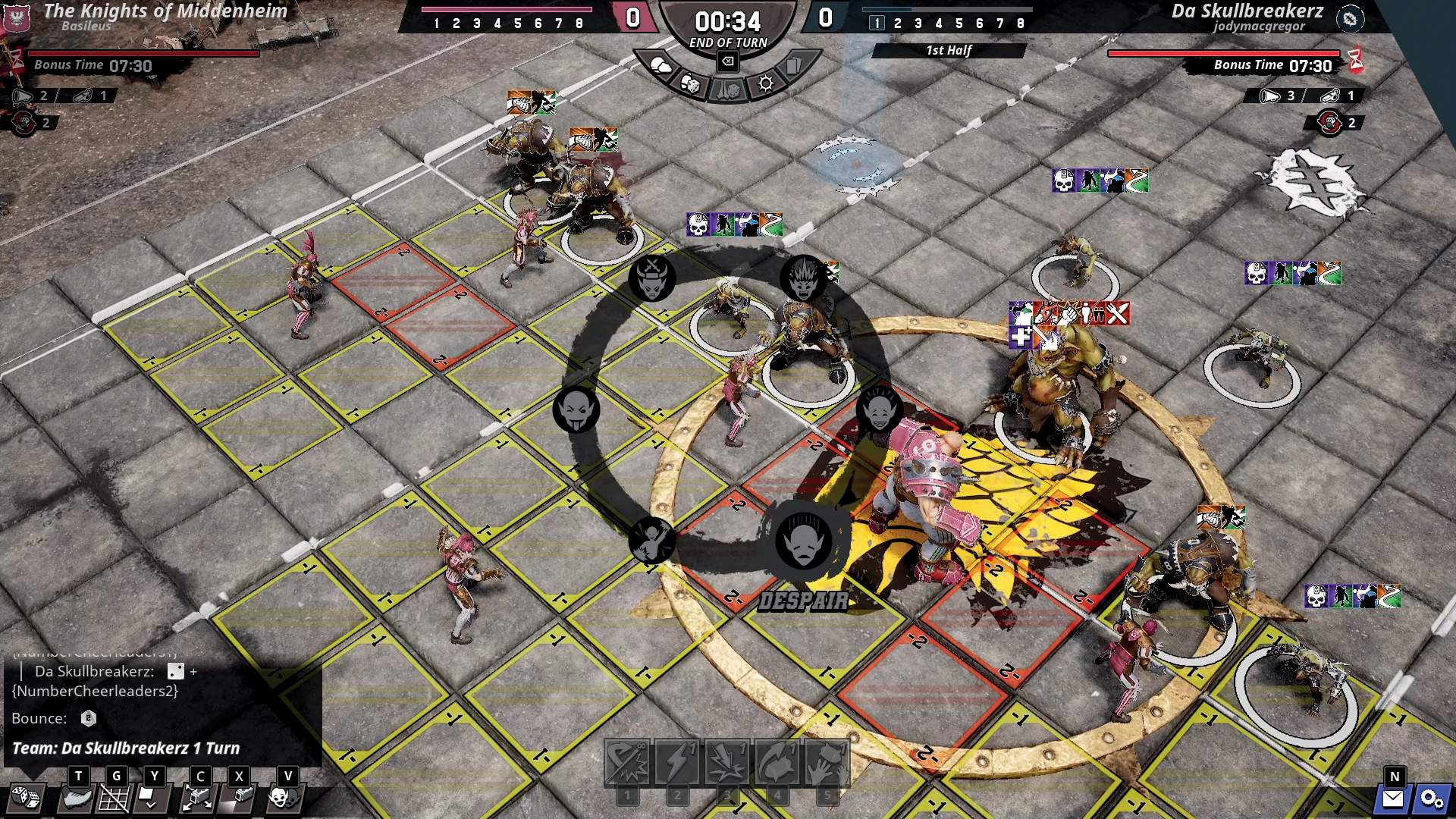
We are the champions
Though everything that makes it Blood Bowl remains in place, the rules have changed in plenty of ways. For instance, my troll has a new skill called projectile vomit, which I use to puke stomach acid all over Bastian's ogre. Everyone has the ability to jump over prone players, adding a little mobility. And you can use more than one reroll each turn.
Rerolls are a precious commodity. You have to put a lot of thought into committing more than one to a single manoeuvre. "Is it a good move?" asks Bastian. "Depends on the situation, of course, but it gives more elasticity to the system. I think it is a good thing for new players."
When the other team's down and bleeding, then we'll remember about goals and think about walking one in.
I've only got two rerolls per half, and if I use both in a single play it had better be for something worthwhile. A complicated multi-step play, for instance like having the troll pick up the goblin with the ball, first passing a Stupidity check as he has to before doing anything, then passing an Always Hungry check to not eat the goblin, then a Passing test to accurately hurl the tiny doofus, who has to beat another roll just to survive the landing so he can scurry over the line.
That's four rolls in a row. More if the goblin has to dodge out of tackle zones after landing or sprint to go an extra square or two. It's not the kind of thing a team like the Black Orcs will try often when safer plays—like hitting people—are available. When the other team's down and bleeding, then we'll remember about goals and think about walking one in.
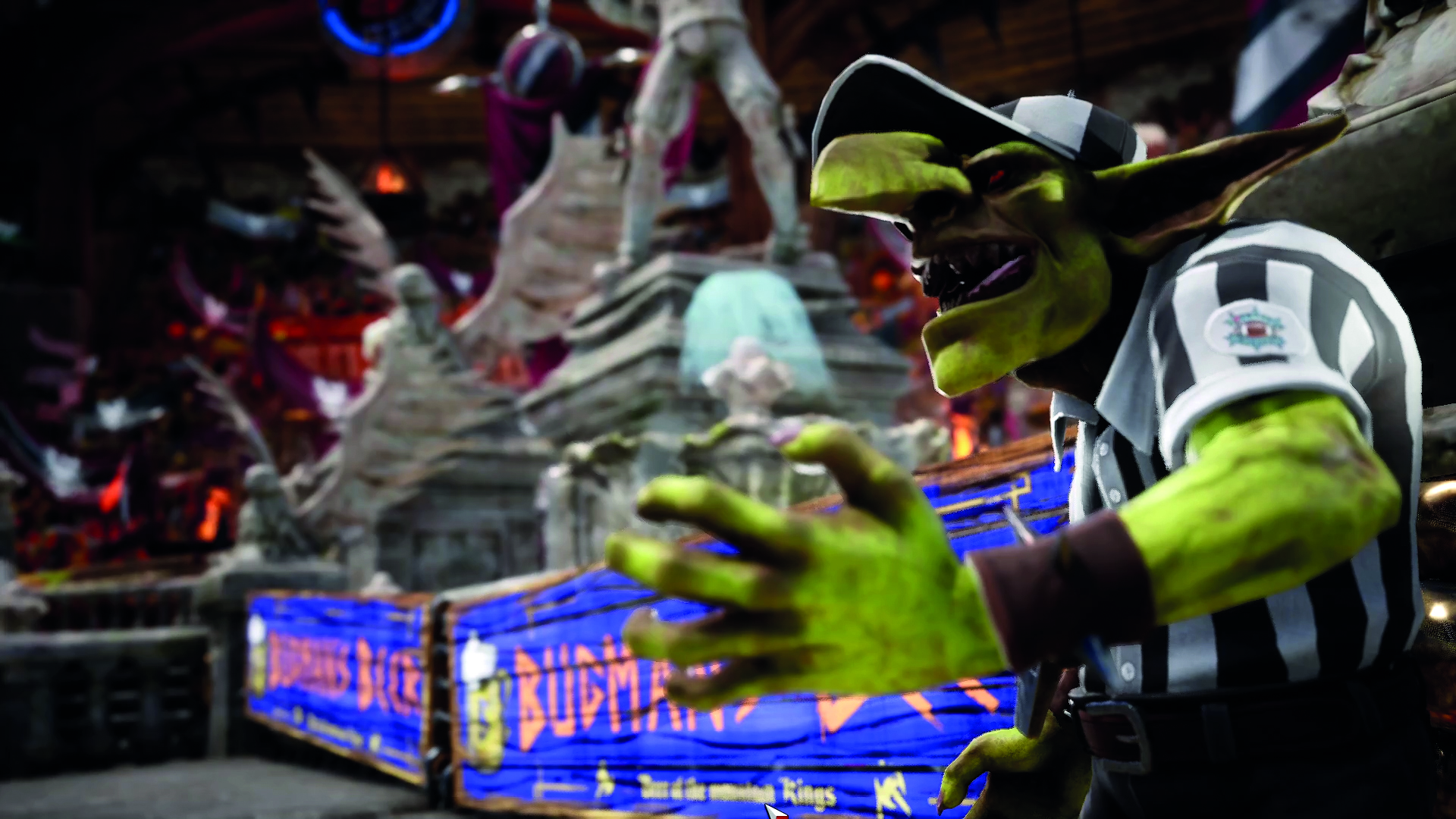
Other teams, those of the agile-and-fragile variety, need to spit in the face of probability on the regular. A simple change like being able to spend more than one reroll per turn could significantly change how they're played, making hail-mary risks more common. "Especially during the last turns of a drive," says Bastian, "I think it will occur during those kind of moments."
Other new rules bring a little more balance to Blood Bowl, though in typically chaotic ways. Teams with a lower value, perhaps because they've lost a few players to a bashy opponent in a previous game, can roll for 'Prayers to Nuffle'—the god of football violence whose name is 'NFL' as pronounced by someone who gets hit in the head for a living. Nuffle might open trapdoors on the pitch, grease someone's boots, or help you sneak a knife onto the field.
Special Play cards, fondly remembered from the board game's 1990s version, have returned to the tabletop game with similar effect. They're inducements available pre-match, when you're bribing the referee and hiring an extra healer. They let you draw from decks full of dirty tricks like "Look, a Distraction!" and magic items like Agrablag's Ball of Pain. Only some of them will be in Blood Bowl 3, Bastian tells me. "We have a bunch of special play cards for the launch of the game, not all of them directly at launch," he says. Fingers crossed the Mutated Balls card makes it in.
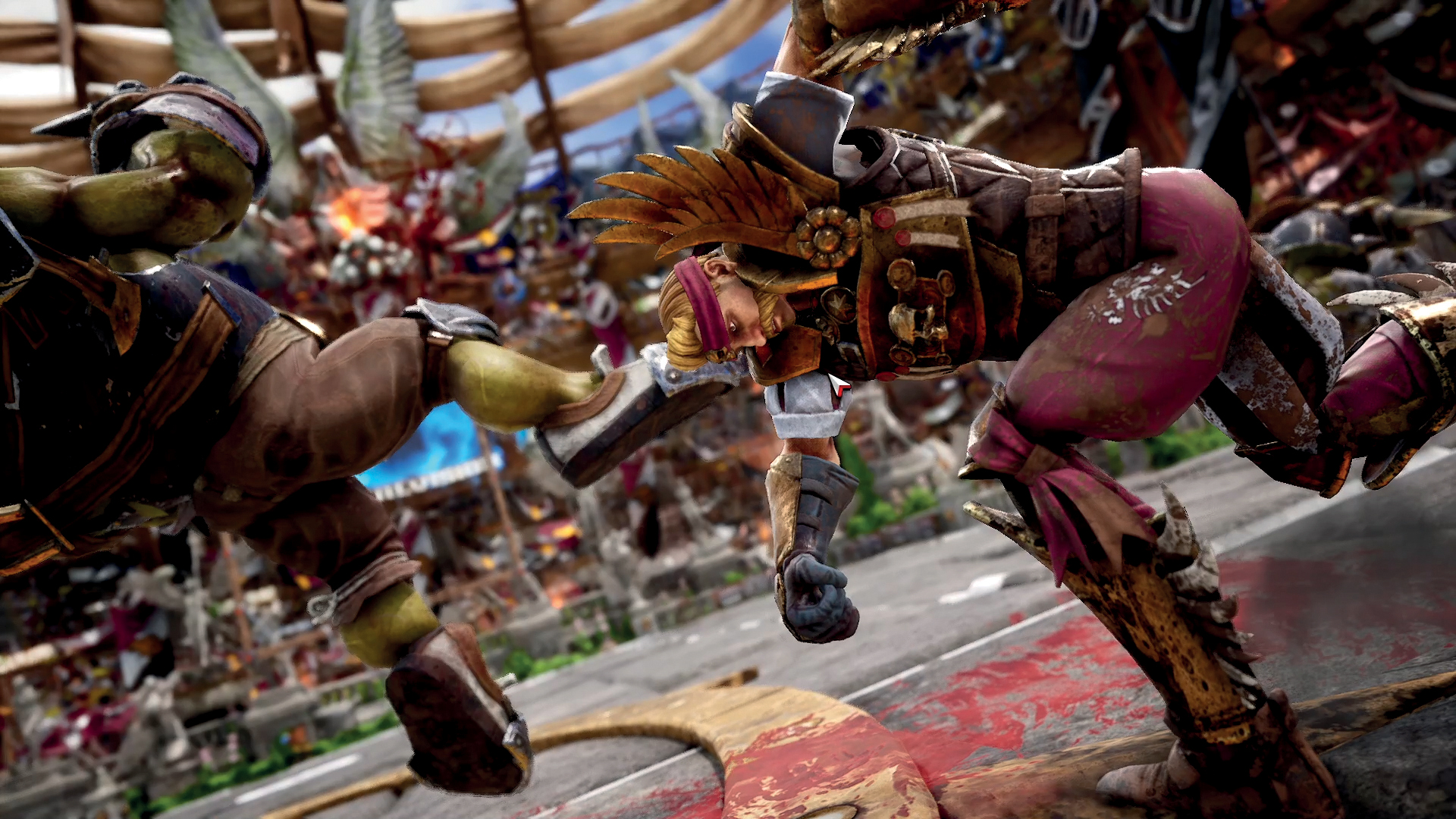
The beautiful game
Though Blood Bowl 2 looked nice enough, it had its limitations. Crowds made up of the same four people, smeared ground textures, a lack of variety in player models—not the kind of things that ruin a turn-based sports game, but very noticeable after some time.
Blood Bowl 3 may not have crowds of unique individuals in the stands, but it does a better job disguising that with waving pennants, extra statuary, cooking fires, and water features placed around the stadium. There's even a camera goblin balancing on a barrel in the pond.
We're playing on the Imperial Nobility's home ground, rough grey astrogranite that highlights spilled blood nicely, one of 12 pitches ("some of them with new game rules") in Blood Bowl 3.
The players look a little less copy-pasted. My orcs have different arrays of tusks attached to their faces and patterns on their shoulderpads, and while one of my goblins wears knuckledusters and a beaky helmet, another has spiked elbow pads and a faceguard impressively shaped like a toothy metal mouth. "We have improved the visuals," Bastian says, "we based our artistic vision on the figurines."
More customisation options help with that. An orc doesn't just get to choose from a handful of preset heads, but from separate helmets, shoulder pads, body armour, arm guards (left and right separately), and an overall level of spiky bits, as well as different colours for each. It's closer to painting a miniature, without having to worry about mucking up the eyes.
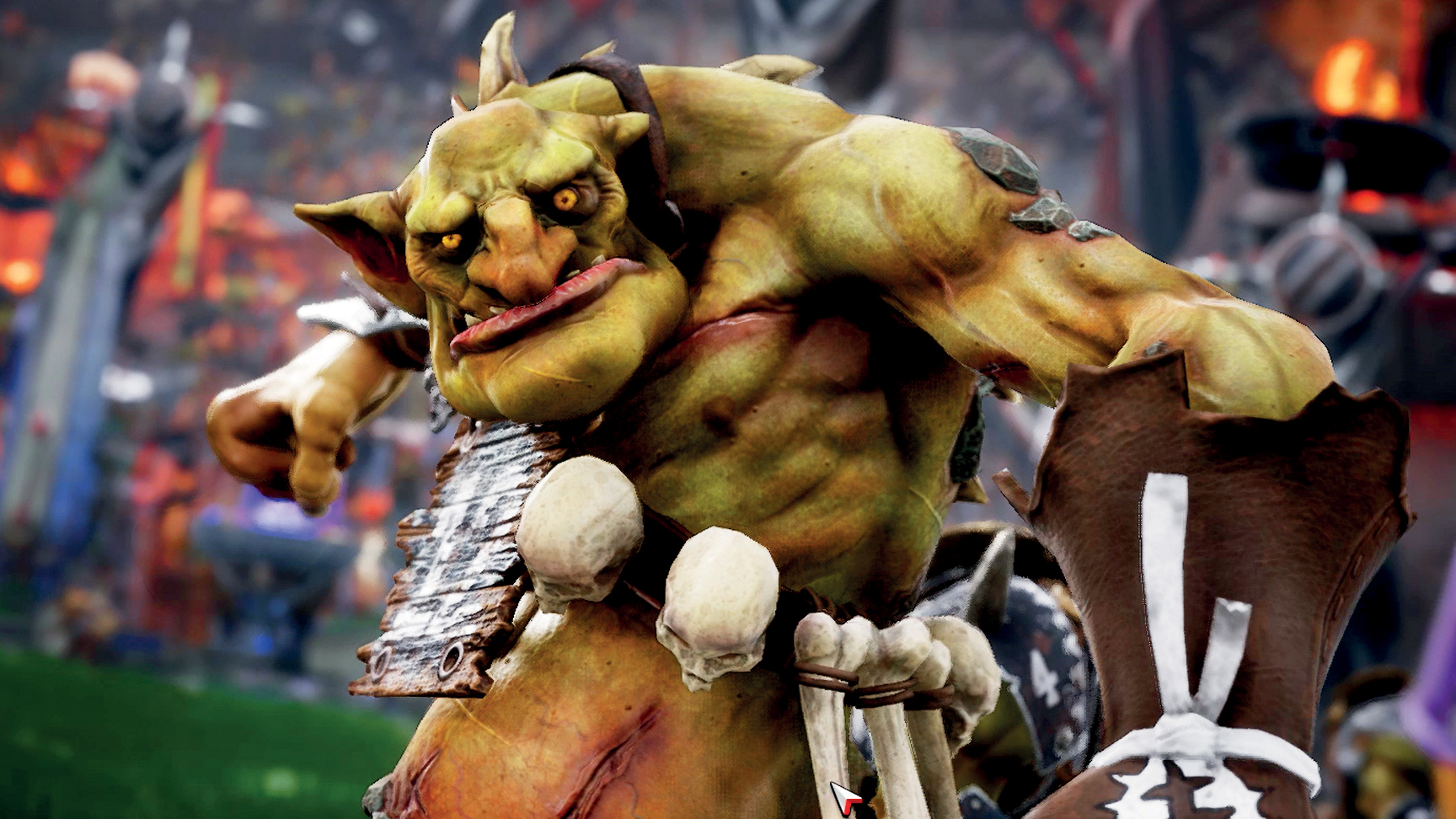
There will be blood
Your personalised designs get highlighted in snappy cinematics where you see your perfect beautiful creation get slammed into the ground by an ogre. They've been abbreviated from the overlong cinematics in Blood Bowl 2, but I recognise the Noble Blitzer using the same attack the Bretonnian Blitzers used to.
"We created a new bunch of animations, especially for the new factions," Bastian says, "and others are reused from the previous ones. We kept the best ones from Blood Bowl 2." I'm not sure this sideways uppercut is one I'd keep, but perhaps I'm salty because I'm watching it lift my guy into the air.
All this is overseen by a coach, now represented next to the dugout. Bastian's coach is wearing an elaborate winged headpiece, mine has half a dead ghoul nailed to his shoulder.
All this is overseen by a coach, now represented next to the dugout. Bastian's coach is wearing an elaborate winged headpiece, mine has half a dead ghoul nailed to his shoulder. The coaches also appear in pop-ups when you choose an emote, of which there are six: despair, celebration, incitement, tease, kill us, and explosion. Six perfectly normal emotional responses. I'm feeling a bit explosion today. The coaches aren't just for show, though. "If the foul action is made and the referee has seen it you can try to use the coach to tell him no," Bastian explains. There's a chance your coach's argument will earn your player a reprieve. Bastian helpfully demonstrates this system by kicking a half-dead goblin while it's down.
There's space for assistant coaches and cheerleaders on the sides of the field as well. "Each faction has its own cheerleader," Bastian says, "visually different, and the dances are different. It was a huge request from the community because it was the case in Blood Bowl 1, but not in Blood Bowl 2."
Of the handful of cheerleader options in Blood Bowl 2, the orcs with weighted nipple tassels were difficult to forget about. Cyanide has to run its designs by Games Workshop to get validated and were surprised to receive a yes on that one, so I'm told they've submitted some wild designs for Blood Bowl 3.
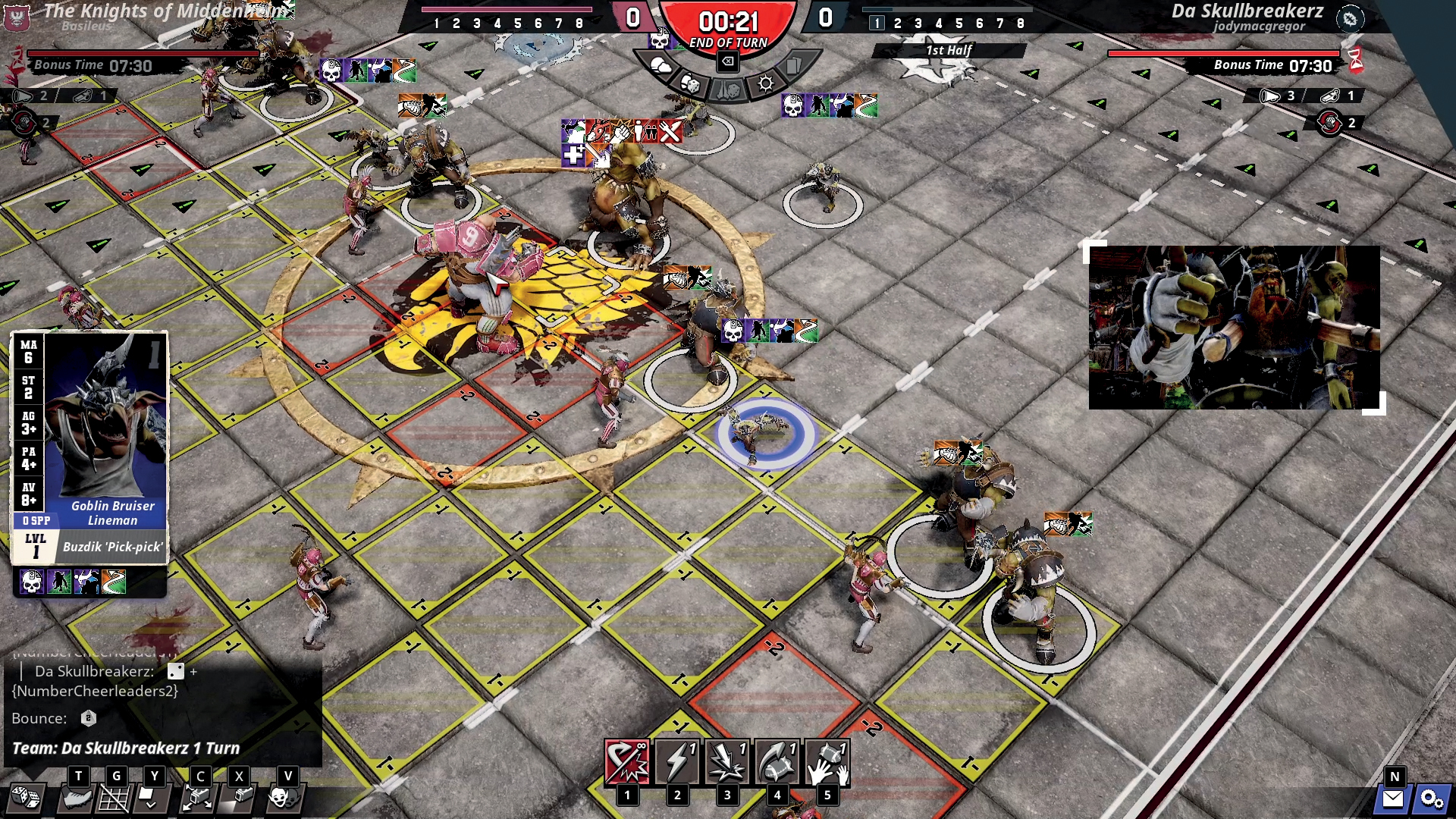
Splattermania
The tabletop return of Blood Bowl was bittersweet for people who got into it immediately before lockdown. "Unlike the tabletop version the digital version obviously allows for players to play with people they're not physically with," says Rees. "Also it brings in new players who may not be aware of the tabletop version so we see it as complimentary for those that love the tabletop version, rather than an alternative."
For those who prefer a singleplayer experience, Blood Bowl 3 has a story campaign that won't force you to play vanilla humans like Blood Bowl 2 did. "You can create a skaven team for example and play with this skaven team all the campaign," Bastian says. "Now the campaign is divided into chapters and each chapter is a specific competition, which has specific challenges to beat." Your custom team doesn't have to end their story there, either. "You can play the team you have created during all the campaign, and after that play the same team in multiplayer."
Sounds grand, but singleplayer won't count for much without an AI that puts up a bit of a fight, and the AI in Blood Bowl 2 was a cakewalk even on hard difficulty mode, unless you handicapped yourself with a low-tier team. When I ask Bastian whether this will be improved he explains the AI is being programmed "to be more offensive than before, and it will try also to create some configurations with its players". He loses some of my confidence when the first configuration he mentions is a cage to protect the ball-carrier, something the AI already relies on too much in Blood Bowl 2, rarely passing or running even when there aren't enough turns left to score any other way.
Bastian assures me that "near the end of a drive she will try to do more ... in order to complete a touchdown" and "she will be more aggressive about trying to do more fouls", which would be an improvement.
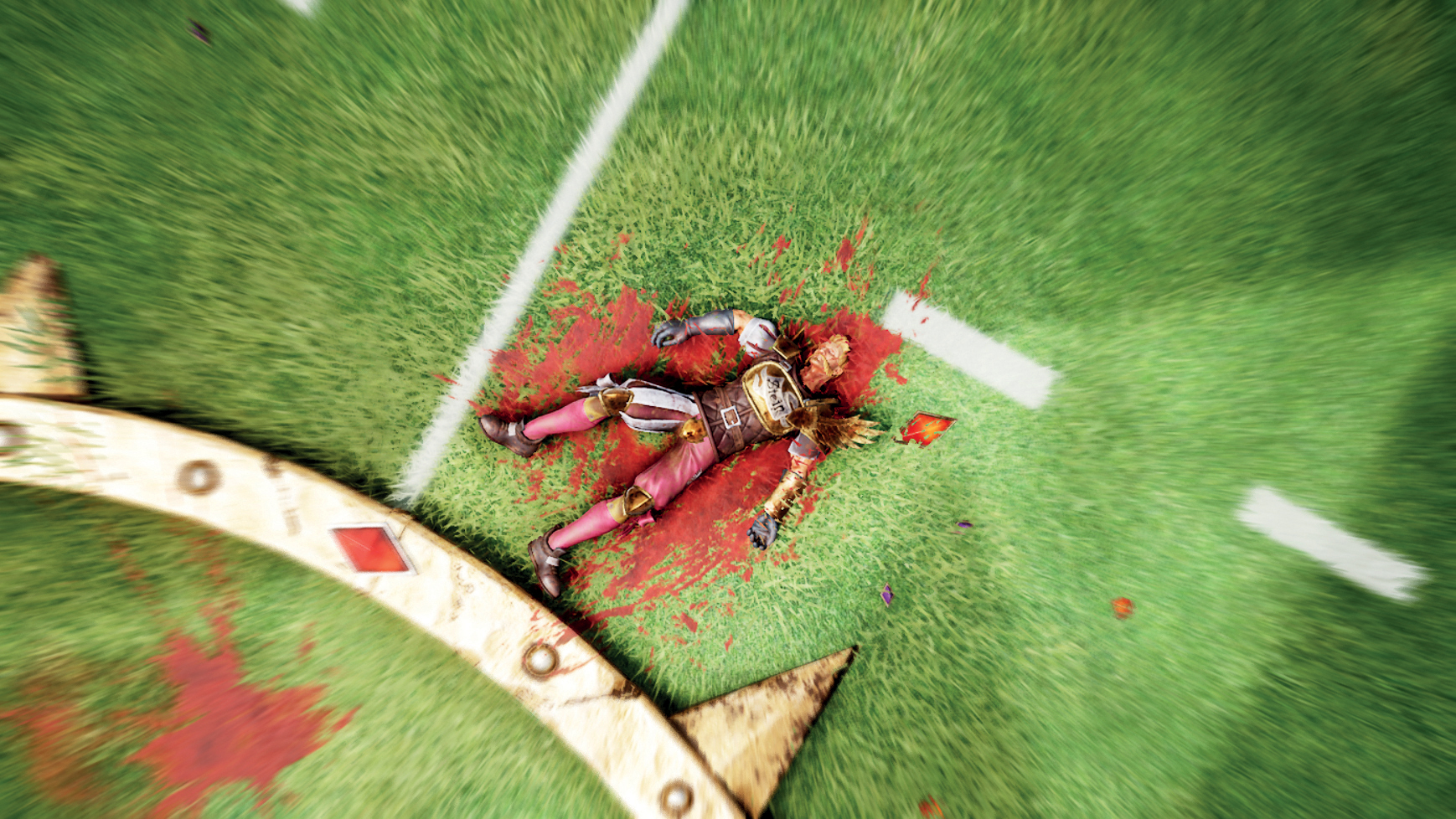
Since I didn't get to try the singleplayer, I can only hope Blood Bowl 3 can pit you against computer-controlled teams that know how to play it. Everything else Bastian says is encouraging. He explains that we'll be able to make leagues that mix player and AI teams, and decide whether players are allowed a pool of bonus turn time (another nice touch for beginners). The menus are being redesigned, and you'll be able to see all your players and any competitions you're managing more easily.
A detail that matters to me: Blood Bowl 3 lets you rename players at any time, not just when hired. I'm from the XCOM school of nominative reward, where they earn nicknames by living long enough to distinguish themselves, or die anonymous. The same applies to elves and goblins, whose survival odds are about the same as XCOM squaddies.
But I get up again
Surviving against the odds is what Blood Bowl is all about, and the game's production embodies its theme. The first edition in 1986 was seemingly produced on a whim, and after the third edition Games Workshop abandoned it for 20 years. A game of Blood Bowl is full of surprises, but it's just as surprising the game still exists.
"In retrospect the idea of fantasy races playing a contemporary-style sports game was a crazy idea to have in the 1980s," admits Rees, "but it clearly struck a chord and the cheeky irreverence but recognisable structure just work really well together. Who doesn't like a referee you can bribe, players with chainsaws, or an ogre throwing a goblin down the field to score a touchdown?"

Jody's first computer was a Commodore 64, so he remembers having to use a code wheel to play Pool of Radiance. A former music journalist who interviewed everyone from Giorgio Moroder to Trent Reznor, Jody also co-hosted Australia's first radio show about videogames, Zed Games. He's written for Rock Paper Shotgun, The Big Issue, GamesRadar, Zam, Glixel, Five Out of Ten Magazine, and Playboy.com, whose cheques with the bunny logo made for fun conversations at the bank. Jody's first article for PC Gamer was about the audio of Alien Isolation, published in 2015, and since then he's written about why Silent Hill belongs on PC, why Recettear: An Item Shop's Tale is the best fantasy shopkeeper tycoon game, and how weird Lost Ark can get. Jody edited PC Gamer Indie from 2017 to 2018, and he eventually lived up to his promise to play every Warhammer videogame.

